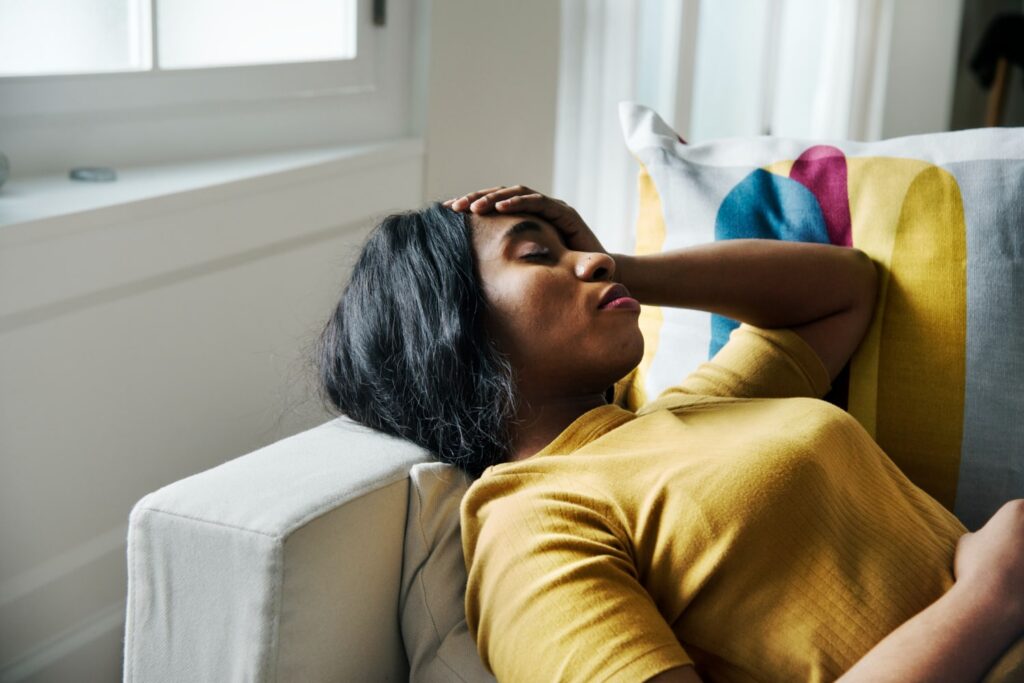- The duration of cervicogenic dizziness varies. An episode can last anywhere from a few minutes to several hours. The condition itself may persist for several years, with periodic episodes.
- Smptoms of cervical vertigo may not appear until months or even years after a traumatic event.
Cervicogenic dizziness is a condition that remains enigmatic for clinicians dealing with dizzy patients. It is a type of dizziness that is closely associated with neck pain, neck injury or neck pathology after excluding other causes of dizziness. Patients with cervicogenic balance disorder rarely experience true vertigo; instead, they often complain of lightheadedness and disequilibrium which are included under dizziness.
The sense of balance and orientation in humans depends on the optimal functioning of multisensory perception and integration in the nervous system. Proprioceptive signals from neck muscles and cervical joints play an enormous role in maintaining and fine-tuning a person’s orientation at rest and balance while in motion. Alteration in these proprioceptive signals seems to be responsible for the majority of cases of cervicogenic dizziness.
| Physiology | Technical Details |
|---|---|
| Vestibular System | The vestibular system includes the inner ear and its associated structures, which are responsible for detecting head movement and orientation in space. |
| Vestibular Nuclei | Vestibular nuclei are located in the brainstem and are responsible for integrating vestibular input and coordinating eye movements, head movements, and body stance. |
| Vestibulo-Ocular Reflex | The vestibulo-ocular reflex (VOR) is a reflexive eye movement that occurs in response to head movement and is controlled by the vestibular nuclei. |
| Neck Proprioception | Neck proprioception is the sense of the position of the neck in space, which is important for maintaining balance and posture. |
| Cervical Vestibular Evoked Myogenic Potentials | Cervical vestibular evoked myogenic potentials (cVEMP) are an electrical response that is evoked by sound stimulation and reflects the integrity of the saccular branch of the vestibular nerve. |
| Vestibular Rehabilitation | Vestibular rehabilitation is a form of physical therapy that uses specific exercises and activities to improve balance and reduce dizziness. |
There are many conditions with separate pathophysiological backgrounds that can cause cervicogenic dizziness. These conditions include degenerative cervical spine disorder (DCD), also known as cervical spondylosis (CS), which constitutes the most common cause of cervicogenic dizziness.
Growing evidence supports the role of cervical joints in maintaining posture and contributing to cervicogenic dizziness in a diseased state.
How long does it last?

Usually, several minutes to hours.
Patients with cervicogenic dizziness often complain of non-specific dizziness or feeling of lightheadedness rather than true vertigo.
The dizziness seen in these patients would mostly be episodic, lasting from minutes to hours. In some patients with degenerative cervical spine disorder, the onset of dizziness can have a temporal relationship to the turning of the neck.
Neck stiffness, shoulder pain, headache, radiculopathy or myelopathy are other features that may also be seen in these patients.
The length of time that an individual experiences cervical vertigo is dependent on various factors such as the underlying cause and severity of their condition. Proper diagnosis and treatment are crucial in managing symptoms and improving one’s quality of life.
Other disorders can have varying duration, bringing the importance of an adequace diagnosis to evaluate proper treatment.
- Labyrinthine concussion – episodic, with symptoms ranging from hours to few days
- Vestibular Migraine – duration of few hours (4 hours) up to 72 hours
- Ménière’s Disease – Usually minutes to few hours.
Importance of Diagnosis
There are no definitive clinical or laboratory tests for cervicogenic dizziness, and therefore cervicogenic dizziness, is a diagnosis of exclusion. It can be difficult for healthcare professionals to differentiate cervicogenic dizziness, from other vestibular, medical and vascular disorders that cause dizziness, requiring a high level of skill and a thorough understanding of the proper tests and measures to accurately rule in or rule out competing diagnoses.
- The first step in diagnosing CGD is to take a detailed history from the patient. The clinician should ask about the onset and duration of symptoms as well as any precipitating factors such as neck movement or trauma. The clinician should also inquire about any associated symptoms such as headache or neck pain.
- Next, the clinician should perform a physical examination which includes an assessment of cervical range of motion (ROM), palpation for tenderness over cervical facet joints or muscles and an assessment for nystagmus (involuntary eye movements) during head movements.
If these initial assessments suggest that CGD may be present then further testing may be required. These tests may include imaging studies such as MRI or CT scans to assess for any structural abnormalities in the cervical spine. In addition, vestibular function tests such as caloric testing or videonystagmography (VNG) may be performed to assess for any vestibular dysfunction.
Treatment possibilities
Cervicogenic dizziness often has several causes, so several treatments may be needed. One type of treatment that you should do is manual therapy (massage or physical therapy).
Physical therapy may include strengthening and stretching exercises, massage to ease stiffness and exercises to correct posture. Chiropractic treatments can also provide relief for patients experiencing Cervicogenic Vertigo after a traumatic event.
Cervicogenic dizziness will usually resolve with treatment of the neck problem, but may also require vestibular rehabilitation for complete resolution of symptoms.
MD, PhD. Physical Medicine & Rehabilitation Physician from São Paulo - Brazil. Pain Fellowship in University of São Paulo.

